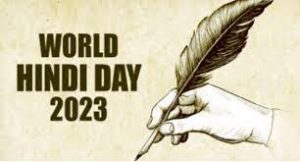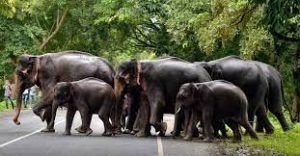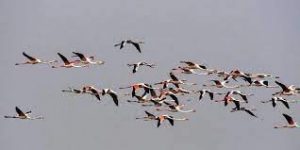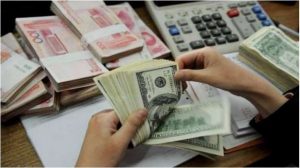Today’s Current Affairs: 11th January 2023 for UPSC IAS exams, State PSC exams, SSC CGL, State SSC, RRB, Railways, Banking Exam & IBPS, etc
Table of Contents
World Hindi Day 2023: Theme

World Hindi Day is celebrated every year on January 10.
- The theme this year for World Hindi Conference is “Hindi – Traditional Knowledge to Artificial Intelligence”.
- It was first observed in 2003.
- The day is commemorated every year with the objective to promote use of Hindi language abroad.
- It is also the day when Hindi, India’s national language, was spoken for the first time in the United Nations General Assembly.
- It was on this day in 1975 that the first World Hindi Conference was held in Nagpur.
- Since then, such conferences are organised in different parts of the world every year.
Scientific Assessment Of Ozone Depletion 2022:

The recent United Nations report, Scientific Assessment of Ozone Depletion: 2022 said that the Earth’s ozone layer is slowly recovering.
- The successful phasing out of banned substances as envisioned by the Montreal Protocol has set the stage for a complete recovery of the ozone layer by the 2060s, a United Nations-backed panel of experts said at the American Meteorological Society’s annual meeting on January 8, 2023.
- Ozone is a gas composed of three atoms of oxygen.
- It is both a natural and a man-made product that occurs in the Earth’s upper atmosphere (Stratospheric ozone) and lower atmosphere (the troposphere).
- Stratospheric ozone is formed naturally through the interaction of solar ultraviolet (UV) radiation with molecular oxygen (O2).
- The “ozone layer,” approximately 6 to 30 miles above the Earth’s surface, reduces the amount of harmful UV radiation reaching the Earth’s surface.
e-Sanjeevani : Milestone Of Nine Crore Teleconsultations

Union Government’s free telemedicine service, e-Sanjeevani, has recently crossed another milestone by touching nine crore teleconsultations mark.
- e-Sanjeevani is a web-based comprehensive telemedicine solution, launched by the then Ministry of Communications and Information Technology, Government of India, in 2009.
- Created by Centre for Development of Advanced Computing (C-DAC) Mohali, is the creator of eSanjeevani.
- Two modules of eSanjeevani:
- eSanjeevani AB-HWC:The doctor-to-doctor telemedicine platform, being implemented at all the Health and Wellness Centres (HWCs) in the country under Ayushman Bharat (AB) Scheme of Government of India.It was rolled out in 2019.
- eSanjeevani OPD:It is the Patient-to-Doctor remote consultation services rolled out in 2020 amid the first lockdown imposed to fight Covid-19 pandemic, while the Outpatient Departments (OPDs) in the country were closed.
- The initiative is a contactless and risk-free modality that enables delivery of health services to the citizens in the confines of their homes free of cost.
- The C-DAC is working towards adding another innovative feature in eSanjeevani OPD that will enable roll out of National OPDs on eSanjeevani OPD, to offer remote health services to patients in any part of the country.
Young Professionals Scheme:

India and the United Kingdom signed and exchanged letters for Young Professionals Scheme in London.
Young Professionals Scheme:
- It was conceived as part of an India-U.K. Migration and Mobility MoU signed in May 2021 and was announced in November at the G20 summit in Bali.
- It will permit up to 3,000 of their degree-holding citizens aged between 18 and 30 to live and work in each other’s countries for two years.
- The programme will be reciprocal, also allowing UK professionals in the same position to participate in a professional exchange by living and working in India.
- This scheme makes India the first visa-national country to benefit from the scheme.
National Science Day 2023 : Theme Released

The Union Minister of Science and Technology released the Theme of National Science Day 2023 at a function in New Delhi.
- The theme of National Science Day 2023 will be Global Science for Global Wellbeing.
- The government of India designated 28 February as National Science Day (NSD) in 1986.
- On this day Sir C.V. Raman announced the discovery of the ‘Raman Effect’ for which he was awarded the Nobel Prize in 1930.
- Raman Effect is a change in the wavelength of light that occurs when a light beam is deflected by molecules.
- When a beam of light traverses a dust-free, transparent sample of a chemical compound, a small fraction of the light emerges in directions other than that of the incident (incoming) beam.
Wayanad Wildlife Sanctuary : Human Animal Conflict

A Human-Animal Conflict occurred where a local man was attacked by an Elephant and a herd of elephants raided a field of 500 plantains.near Wayanad Wildlife Sanctuary, Kerala.
- Human-animal conflict has become a serious wildlife management problem in Kerala in the last few years.
- People living on the fringes of reserve forests and sanctuaries have a heightened sense of insecurity now.
- Human-Animal Conflict refers to struggles that arise when the presence or behavior of wildlife poses actual or perceived direct, recurring threats to human interests or needs, often leading to disagreements between groups of people and negative impacts on people and/or wildlife.
- Causes: Human population expansion, habitat degradation and fragmentation, land use transformation and rising densities of livestock in protected areas are considered as the major causes of Human-Wildlife conflict.
Wayanad Wildlife Sanctuary:
- Located in Kerala, Wayanad Wildlife Sanctuary (WWS) is an integral part of the Nilgiri Biosphere Reserve.
- It was established in 1973.
- Nilgiri Biosphere Reserve was the first from India to be included in the UNESCO designated World Network of Biosphere Reserves (designated in 2012).
- Wayanad Wildlife Sanctuary is contiguous to the tiger reserves of Nagerhole and Bandipur of Karnataka and Mudumalai of Tamil Nadu.
- Kabini river (a tributary of Cauvery river) flows through the sanctuary.
- Elephant, Gaur, Tiger, Panther,Sambar, Spotted deer, Barking deer, Wild boar, Sloth bear, Nilgiri langur, Bonnet macaque, Common langur, Wild dog, common otter, Malabar giant squirrel etc are the major mammals.
Bhitarkanika National Park : Migratory Birds Report

The recent census report of birds released by the forest department in Odisha said that the number of migratory birds in Bhitarkanika National Park has risen to 1,39,959 this winter compared to last year’s count of 1,38,107 birds.
- The report highlighted that the number of bird counts increased but the diversity of species has decreased compared to last year.
- This year the Bhitarkanika National Park saw 140 species of birds compared to 144 last year
- Bhitarkanika National Park is located in the Kendrapara district of Odisha.
- It is India’s second-largest mangrove ecosystem after the Sunderbans.
- This National Park is a network of creeks and canals which are inundated with waters from rivers Brahmani, Baitarani, Dhamra and Patasalaforming a unique ecosystem.
- It is home to the largest congregation of endangered Salt Water Crocodiles in the country.
- The Gahirmatha Beach which forms the boundary of the sanctuary in the east is the largest colony of the Olive Ridley Sea Turtles.
- Bhitarkanika is also home to eight varieties of Kingfisher birds which is also a rarity.
India Forex Reserves : Highlights

After 3 consecutive years of rise, India’s forex reserves declined by $70 bn in 2022 on account of rising inflation and interest rates.
- This decline can be primarily about 55-60% of total loss attributed to the valuation loss of other foreign currencies (€, £, ¥) against USD that India held as reserves.
- Another major cause is the FPI withdrawal.
- Due to this, the number of months of imports that can be covered through India’s reserves have also declined (from 13 in 2021-22 to 9.2 in 2022-23).
- Holding forex reserves reduces the likelihood of BoP crises and helps preserve economic and financial stability against disordered market conditions.
- India’s Forex Reserves include- Foreign Currency Assets, Gold reserves, Special Drawing Rights, Reserve position with the IMF.




